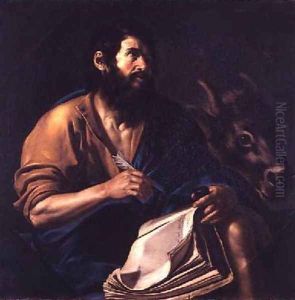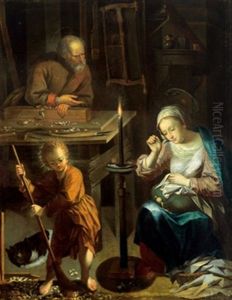Johann Ulrich Loth Paintings
Johann Ulrich Loth, also known as Giovanni Ulisse Lot or simply Ulrich Loth, was a significant German Baroque painter who spent a considerable part of his career in Italy. Born in Munich in 1590, Loth was part of a family of artists; his father was the painter Christoph Loth, and his brother was the artist Johann Carl Loth, who also achieved considerable fame. Johann Ulrich's early life and training are not well-documented, but it is known that he was influenced by the work of his contemporaries and predecessors in both the German and Italian artistic traditions.
In the early 17th century, Loth moved to Italy, which was a common practice among Northern European artists seeking to study the works of the Renaissance masters and the emerging Baroque style. He settled in Venice where he became influenced by the dramatic chiaroscuro and dynamic compositions of the Venetian masters like Jacopo Tintoretto and Paolo Veronese. Loth's own style evolved to incorporate these elements, and he became known for his strong use of light and shadow and his ability to convey intense emotions through his biblical and mythological scenes.
Loth's work was characterized by the dramatic intensity of his figures and a robust, painterly approach to form and color. He was adept at capturing the textures of fabrics and the human form, giving his paintings a tactile and inviting quality. His paintings were sought after by wealthy patrons and churches alike, and he received numerous commissions during his time in Italy.
Despite spending most of his life in Italy, Johann Ulrich Loth's style retained a distinct Northern character in its emotional depth and in certain stylistic elements, which set his work apart from his Italian contemporaries. He became a bridge between the Italian and Germanic artistic worlds, bringing elements of the Baroque from Italy back to the German-speaking regions.
Johann Ulrich Loth passed away in Venice in 1662. His legacy is preserved in his powerful and emotive paintings, which can be found in various museums and collections across Europe. Loth's contribution to the Baroque era remains significant, as he helped disseminate the stylistic innovations of the Italian Baroque to Northern Europe, influencing subsequent generations of artists.

